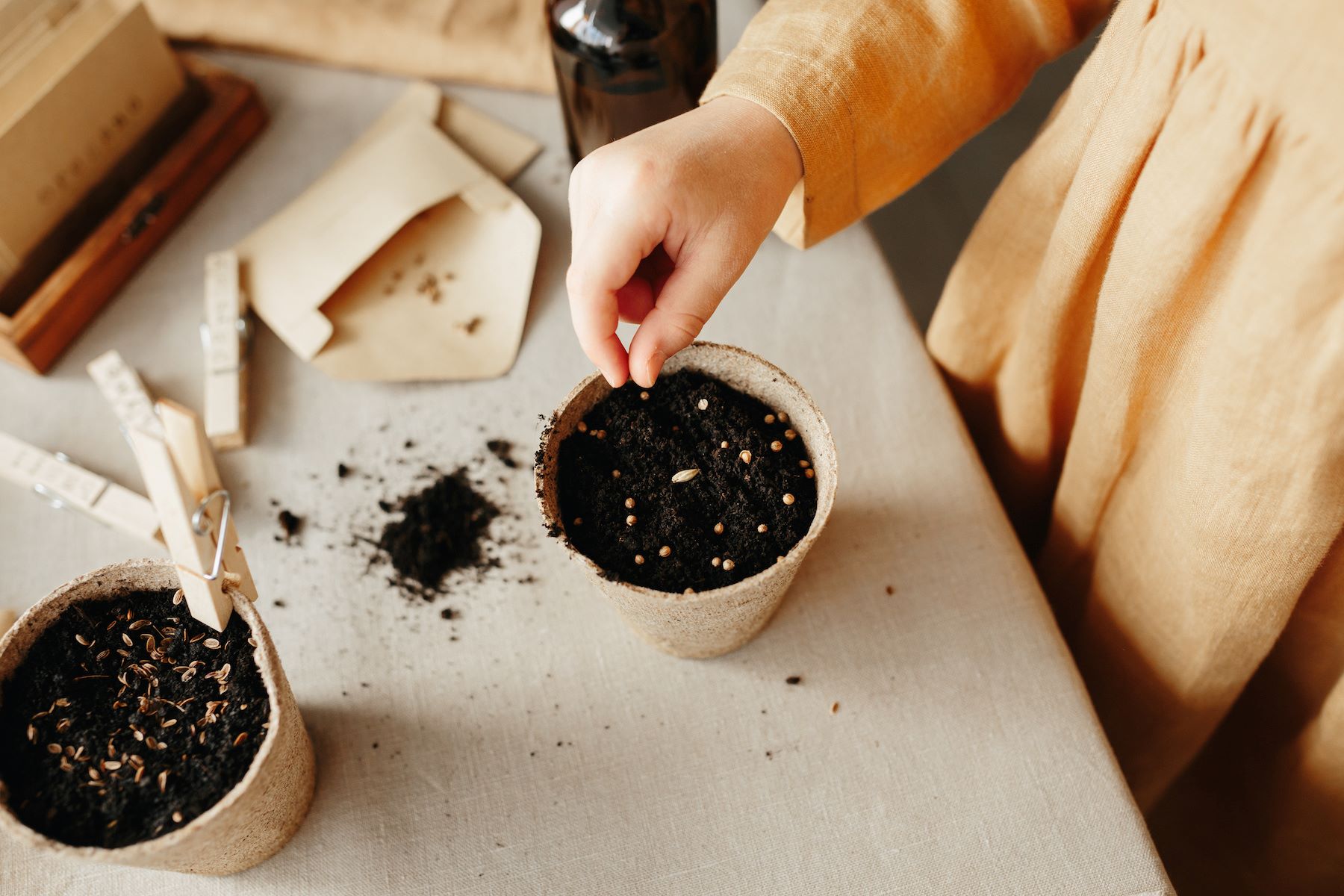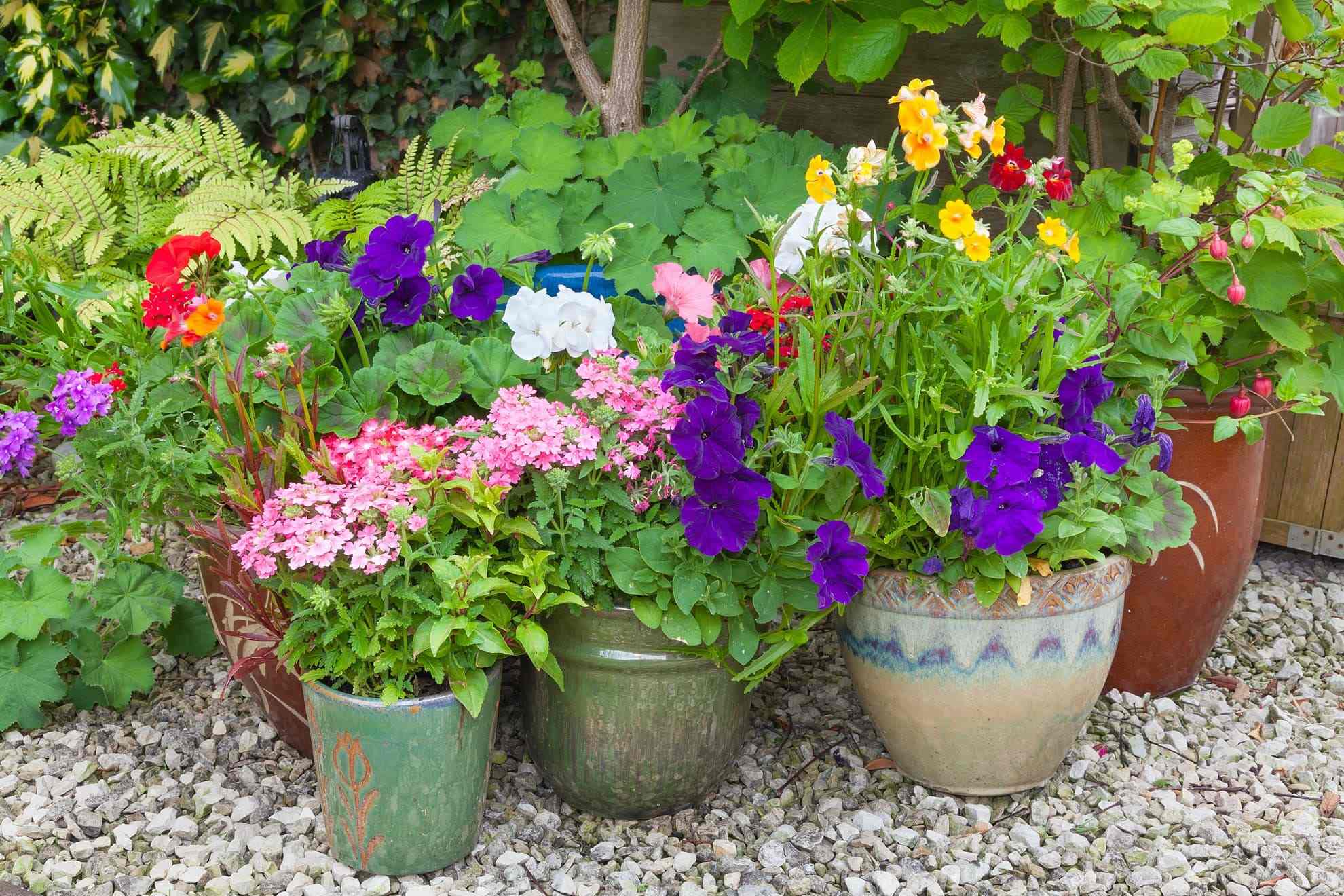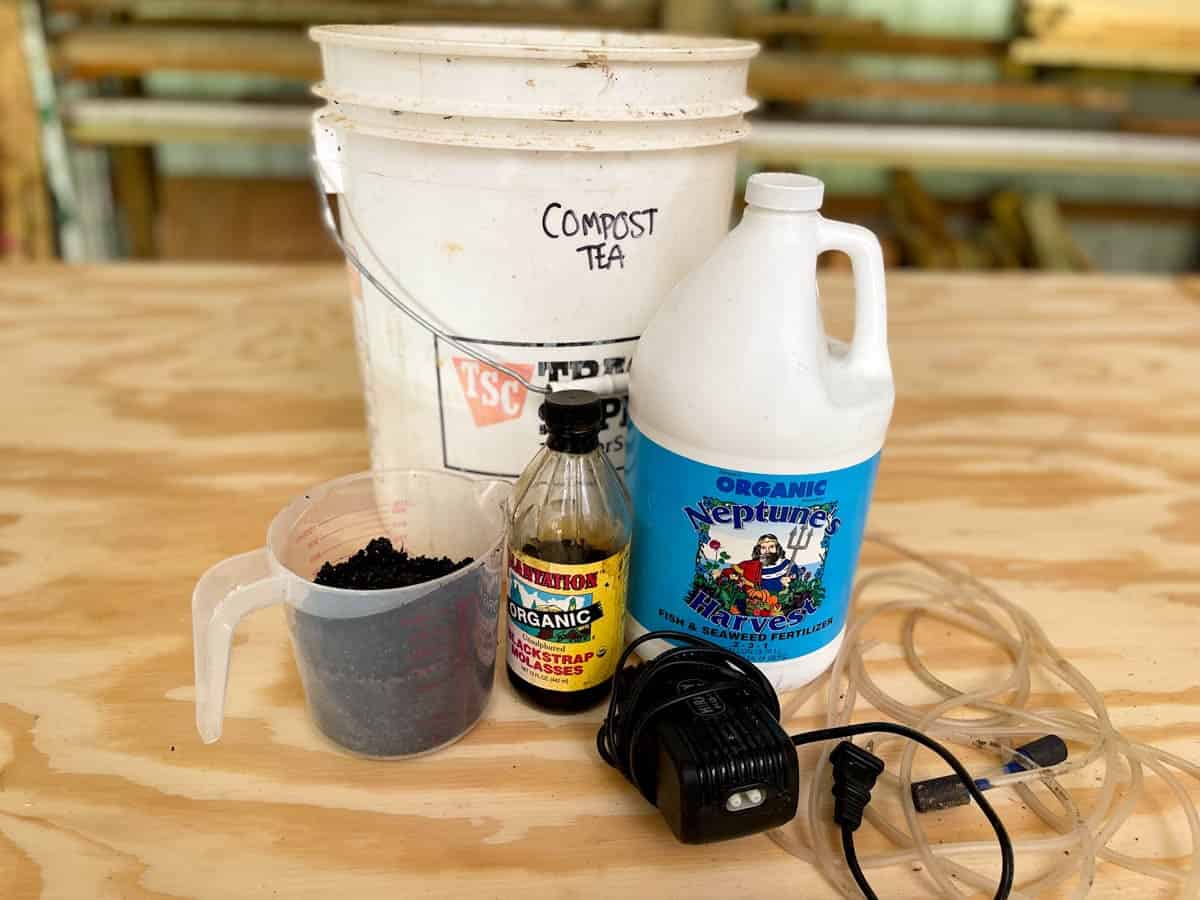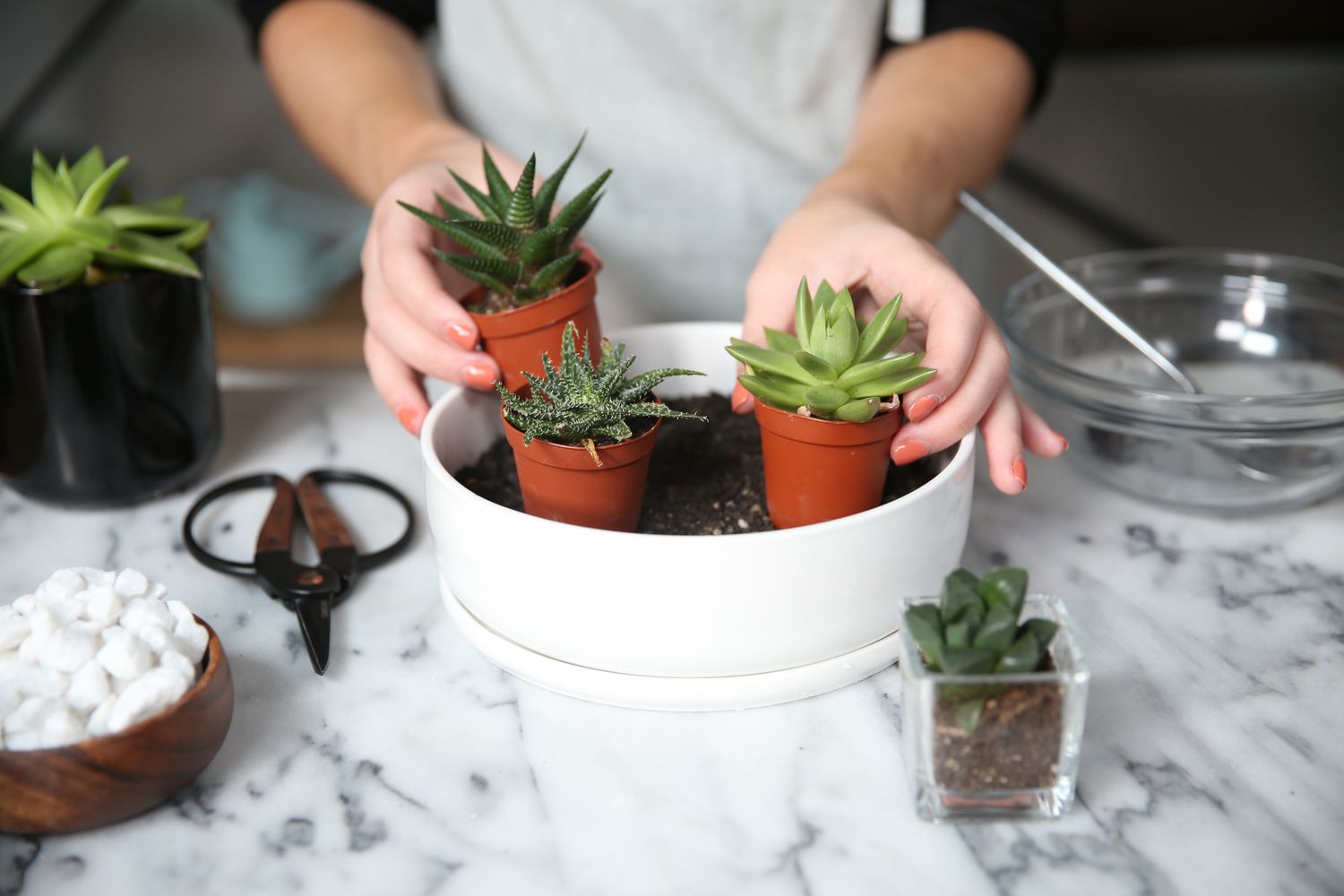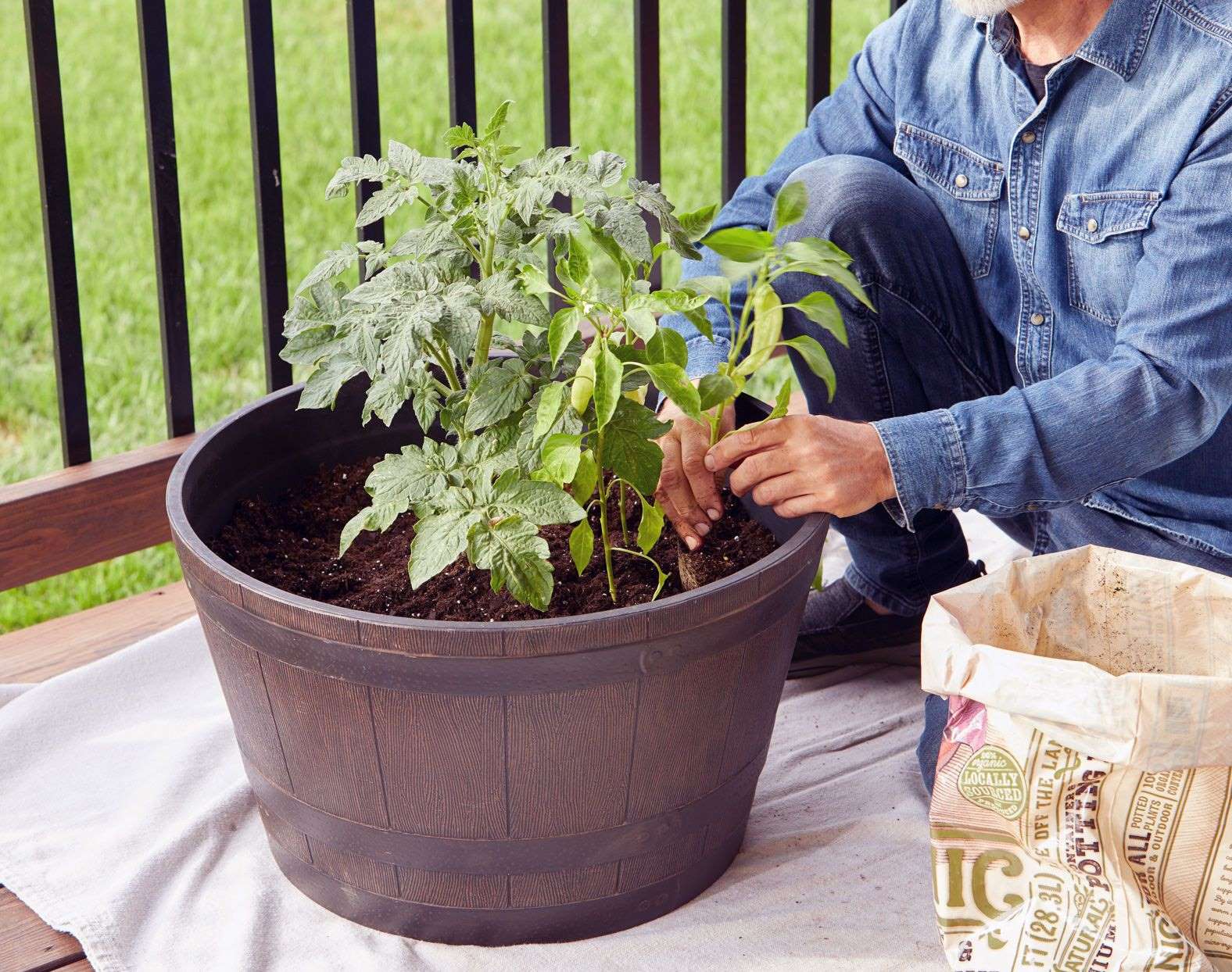Home>Gardening Tips and Tricks>Eco-Friendly Gardening>How To Use Compost In Potted Plants
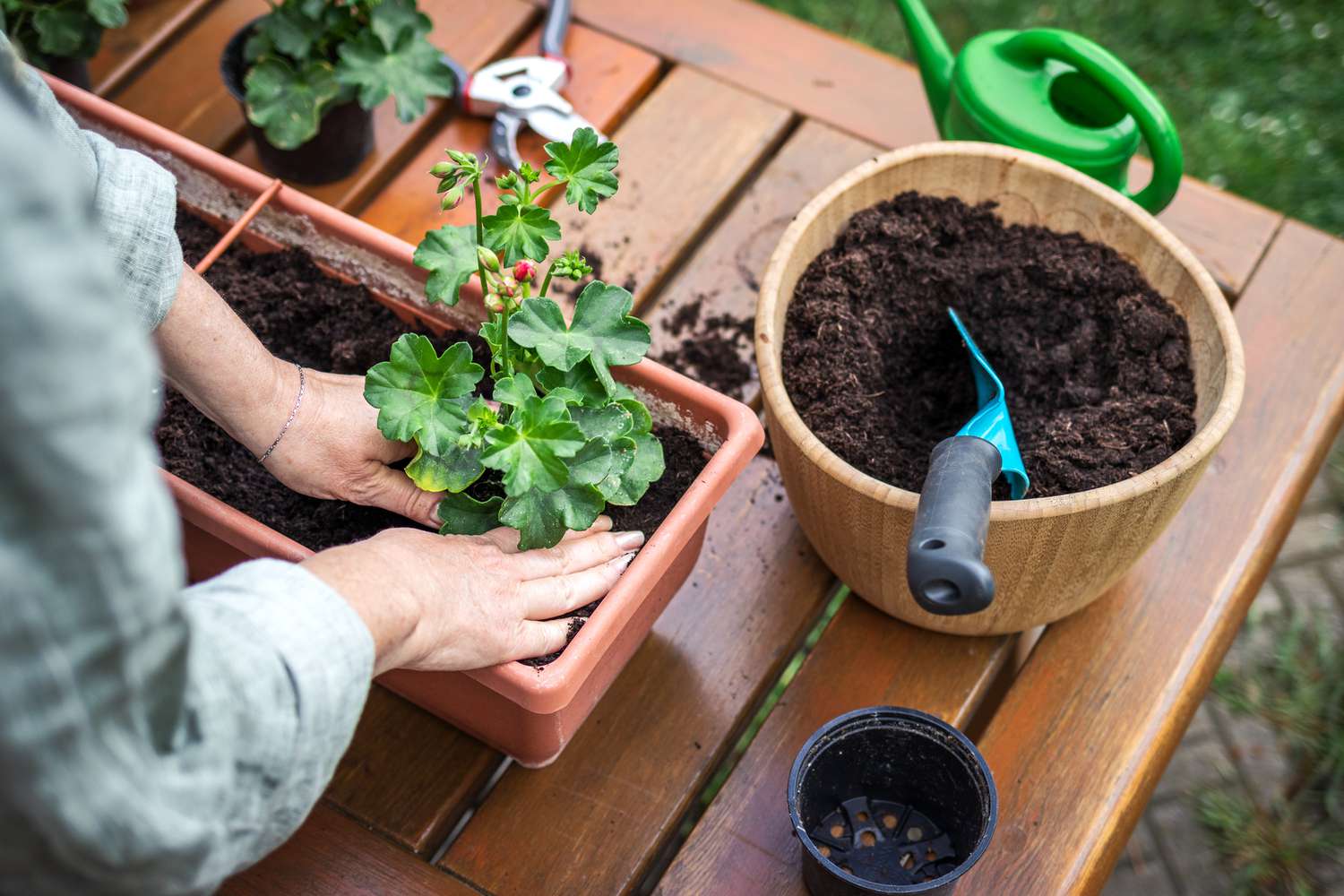

Eco-Friendly Gardening
How To Use Compost In Potted Plants
Modified: February 9, 2024
Discover an eco-friendly approach to gardening with our guide on how to use compost in potted plants. Enhance your plant health and reduce waste with this sustainable gardening technique.
(Many of the links in this article redirect to a specific reviewed product. Your purchase of these products through affiliate links helps to generate commission for Chicagolandgardening.com, at no extra cost. Learn more)
Table of Contents
- Introduction
- Benefits of Using Compost in Potted Plants
- Selecting the Right Compost for Potted Plants
- Preparing the Compost for Use
- How to Apply Compost to Potted Plants
- Caring for Potted Plants with Compost
- Common Mistakes to Avoid when Using Compost in Potted Plants
- Troubleshooting Common Issues with Compost in Potted Plants
- Conclusion
Introduction
Welcome to the world of eco-friendly gardening! In today’s eco-conscious society, more and more people are embracing sustainable practices, and one of the key pillars of sustainable gardening is the use of compost. Compost is a nutrient-rich organic material that is created through the decomposition of kitchen scraps, yard waste, and other organic matter. It is often referred to as “black gold” due to its ability to improve soil fertility and structure.
While compost is traditionally used in garden beds, it can also be incredibly beneficial for potted plants. Whether you’re an urban gardener with limited space or just looking to maximize your gardening efforts, using compost in potted plants can be a game-changer. Not only does it provide essential nutrients, but it also improves moisture retention and promotes healthy root development.
In this article, we will explore the benefits of using compost in potted plants, how to select the right compost, methods for preparing and applying compost, proper care for potted plants with compost, common mistakes to avoid, and troubleshooting common issues. By the end, you will have all the knowledge and confidence needed to make the most out of compost in your container gardening adventures.
Benefits of Using Compost in Potted Plants
Using compost in potted plants can provide a multitude of benefits that will help your plants thrive. Here are some of the key advantages:
- Nutrient-rich soil: Compost is packed with essential nutrients that your plants need to grow and flourish. It contains a balanced blend of nitrogen, phosphorus, and potassium, along with other micronutrients that are vital for plant health.
- Improved soil structure: The organic matter in compost helps to improve soil structure by increasing its ability to retain moisture and nutrients. Healthy soil is essential for strong and vigorous plant growth.
- Enhanced water retention: Adding compost to your potted plants helps to improve water retention, preventing the soil from drying out too quickly. This is especially beneficial for plants that require consistent moisture, such as herbs and vegetables.
- Promotes beneficial microbial activity: Compost is teeming with beneficial microorganisms that help break down organic matter and release nutrients into the soil. These microorganisms also aid in suppressing harmful pathogens, creating a healthier growing environment for your plants.
- Reduces the need for synthetic fertilizers: By incorporating compost into your potted plants, you can reduce or eliminate the need for synthetic fertilizers. This not only saves money, but it also helps to minimize chemical runoff and promotes a more sustainable approach to gardening.
- Boosts root development: Proper root development is crucial for the overall health and productivity of plants. The organic matter in compost helps to create a loose and well-drained soil, allowing roots to penetrate easily and absorb nutrients efficiently.
- Enriches biodiversity: Compost is a haven for beneficial insects, earthworms, and other organisms that contribute to a thriving ecosystem in your potted plants. This helps to create a balanced and sustainable environment that supports plant growth.
By incorporating compost into your potted plants, you can enjoy these numerous benefits and create a healthier and more vibrant garden. So let’s dive into the next section to learn how to select the right compost for your potted plants.
Selecting the Right Compost for Potted Plants
When it comes to selecting the right compost for your potted plants, there are a few factors to consider. Here are some tips to help you make the best choice:
- Quality and maturity: Look for high-quality compost that is mature and fully decomposed. Avoid compost that is still in the early stages of decomposition, as it may contain harmful pathogens or weed seeds.
- Organic sources: Opt for compost made from organic sources, such as vegetable scraps, yard waste, and plant-based materials. This ensures that the compost is free from synthetic chemicals and pesticides.
- Texture and drainage: Consider the texture of the compost. It should be crumbly and well-aerated, allowing for good drainage. Avoid compost that is heavy and compacted, as it can lead to waterlogged soil.
- PH balance: Check the pH balance of the compost. Most potted plants prefer a slightly acidic to neutral pH level. Testing the pH can help determine if the compost is suitable for your plants’ specific needs.
- Compost blends: You can also consider using compost blends that are specifically formulated for potted plants. These blends often contain additional materials, such as perlite or vermiculite, which help improve drainage and aeration.
- Local availability: Check with local garden centers, nurseries, or compost suppliers for locally produced compost. Local compost is often rich in nutrients and tailored to the specific soil conditions in your area.
It’s important to note that not all types of compost are suitable for potted plants. Avoid using compost that is primarily composed of animal manure, as it can be too rich and may burn or damage the delicate roots of potted plants.
By considering these factors and selecting the right compost for your potted plants, you can provide them with the necessary nutrients and create an ideal growing environment. In the next section, we will discuss how to prepare the compost for use in your potted plants.
Preparing the Compost for Use
Before applying compost to your potted plants, it’s essential to prepare it properly to ensure optimal results. Here’s how you can prepare the compost for use:
- Sift the compost: If your compost contains any large clumps or debris, it’s a good idea to sift it before using it in your potted plants. This will help create a finer texture and remove any unwanted materials.
- Add amendments if needed: Depending on the composition of your compost, you may need to make some amendments to ensure it meets the specific needs of your potted plants. For example, you can add perlite to improve drainage or dolomite lime to adjust the pH if it’s too acidic.
- Moisten the compost: Before applying the compost, make sure it is evenly moist. If it’s too dry, you can sprinkle some water and mix it thoroughly. Avoid saturating the compost to the point of waterlogging.
- Avoid using fresh compost: It’s best to let the compost age for a few weeks before using it in your potted plants. This allows any uncomposted materials to break down further and prevents the risk of nutrient imbalances or heat buildup that can harm your plants.
By taking the time to properly prepare the compost, you can ensure that it is in prime condition and ready to provide your potted plants with the necessary nutrients and beneficial microorganisms. Next, let’s explore how to apply compost to your potted plants effectively.
How to Apply Compost to Potted Plants
Applying compost to your potted plants is a straightforward process. Follow these steps to ensure proper application:
- Prepare the container: Ensure that your potted plant has proper drainage holes and is clean and in good condition. This will promote healthy root growth and prevent waterlogging.
- Layer the compost: Add a layer of compost to the bottom of the pot, filling it up to about one-third full. This provides a nutrient-rich base for your plant.
- Plant your potted plant: Carefully place your plant into the pot, ensuring that it is centered and at the desired depth. Gently firm the soil around the plant to secure it in place.
- Backfill with compost: Fill the remaining space around the plant with compost, leaving about an inch or so of space from the top of the pot. This ensures that water can be applied without overflowing.
- Lightly compact the soil: Use your hands or a small gardening tool to lightly compact the compost around the plant. Avoid pressing too hard, as this can hinder water drainage and root development.
- Water the potted plant: After planting, thoroughly water the potted plant to help settle the compost and ensure good moisture distribution. Allow any excess water to drain away.
It’s important to note that the amount of compost needed may vary depending on the size of the pot and the specific requirements of the plant. Generally, aim for a ratio of about 30% compost to 70% potting soil, but adjust as needed for optimal plant growth.
Remember to reapply compost every 6-12 months to replenish nutrients and maintain soil health. As the compost breaks down, it will continue to provide a steady supply of nutrition to your potted plants.
Now that you know how to apply compost effectively, let’s move on to the next section to discover how to care for potted plants with compost.
Caring for Potted Plants with Compost
Using compost in your potted plants is just the first step. To ensure their continued health and vitality, it’s essential to properly care for them. Here are some key tips for caring for potted plants with compost:
- Watering: Check the moisture levels regularly and water your potted plants as needed. Compost helps retain moisture, but it’s important not to overwater, as this can lead to root rot. Ensure proper drainage and adjust watering frequency based on the plant’s specific requirements.
- Fertilizing: Compost provides a slow-release, natural source of nutrients, reducing the need for additional fertilizers. However, if you notice signs of nutrient deficiency or slow growth, you can supplement with a balanced organic fertilizer to boost plant health.
- Pruning and trimming: Regularly prune and trim your potted plants to maintain their shape and encourage new growth. Remove dead or wilted foliage to prevent the spread of diseases and promote overall plant health.
- Watch for pests and diseases: Keep an eye out for common pests and diseases that can affect potted plants. Inspect the leaves and stems regularly for signs of damage or infestation. If necessary, use organic pest control methods to manage pests and diseases.
- Rotate the pots: To ensure even sunlight exposure, periodically rotate your potted plants. This will prevent uneven growth and encourage balanced development.
- Provide adequate light: Different plants have varying light requirements. Place your potted plants in locations that receive the appropriate amount of sunlight or provide supplemental grow lights if needed.
- Monitor temperature and humidity: Some potted plants are sensitive to temperature and humidity levels. Be aware of the ideal conditions for your plants and make adjustments as needed to create the best environment for their growth.
By following these care tips, your potted plants will thrive with the help of compost. Remember to observe your plants closely, as their specific needs may vary. With time and attention, you’ll develop a green thumb and enjoy the beauty and benefits of vibrant, healthy potted plants.
Next, we will discuss common mistakes to avoid when using compost in potted plants.
Common Mistakes to Avoid when Using Compost in Potted Plants
Using compost in potted plants is a fantastic way to boost their growth and overall health. However, it’s crucial to avoid certain common mistakes that can hinder their success. Here are some common pitfalls to watch out for:
- Using immature compost: Using compost that hasn’t fully decomposed can introduce weed seeds or pathogens to your potted plants. Make sure your compost is mature and thoroughly decomposed before applying it.
- Overwatering: Compost retains moisture, so it’s important not to overwater your potted plants. Ensure proper drainage and allow the soil to dry out slightly between waterings to prevent waterlogged conditions that can harm the roots.
- Neglecting other basic plant needs: While compost provides essential nutrients, it’s important not to overlook other basic plant needs, such as proper lighting, temperature, and airflow. Consider each plant’s specific requirements to ensure their overall well-being.
- Using poor-quality or contaminated compost: Using low-quality compost or compost that contains contaminants can have adverse effects on your plants. Always select compost from reliable sources and avoid compost that smells foul or appears to be contaminated.
- Applying excessive amounts of compost: While compost is beneficial, applying excessive amounts can lead to nutrient imbalances, root suffocation, or water runoff issues. Follow recommended guidelines for compost application and adjust according to your plant’s needs.
- Ignoring the pH balance: Different plants thrive in different pH levels. It’s important to monitor and adjust the pH of your compost or potting mix to match your plant’s preferences. Conduct soil tests if necessary and make appropriate amendments.
- Failing to replenish compost: Over time, the nutrients in compost will deplete. It’s crucial to regularly replenish the compost in your pots, either by top-dressing or by mixing in fresh compost to ensure a continuous supply of nutrients.
- Not allowing enough space for root growth: When repotting or starting with new plants, ensure that the pot size provides enough space for proper root growth. Insufficient space can lead to stunted growth and root-bound plants.
Avoiding these common mistakes will help you make the most out of using compost in your potted plants. By being mindful of these pitfalls, you can ensure the success and longevity of your container garden.
Now let’s move on to the next section, where we will discuss how to troubleshoot common issues that may arise when using compost in potted plants.
Troubleshooting Common Issues with Compost in Potted Plants
Using compost in potted plants can greatly benefit their growth and overall health. However, sometimes issues may arise that require troubleshooting. Here are some common problems you may encounter when using compost in potted plants and how to address them:
- Yellowing leaves: If you notice yellowing leaves, it may indicate nutrient deficiency or overwatering. Adjust watering practices and consider supplementing with a balanced organic fertilizer to provide the necessary nutrients.
- Root rot: Overwatering or poor drainage can lead to root rot, characterized by brown, mushy roots. To resolve this issue, improve the drainage by using well-draining potting mix and adjusting watering practices accordingly.
- Pest infestation: Pests such as aphids or mealybugs can infest potted plants. Use organic pest control methods like neem oil, insecticidal soap, or manually removing the pests to eliminate infestations without harming beneficial insects.
- Fungal diseases: Excessive moisture or poor air circulation can lead to fungal diseases like powdery mildew or root rot. Improve ventilation, avoid overwatering, and consider using organic fungicides to treat or prevent fungal diseases.
- Soil compaction: Over time, the soil in potted plants can become compacted, hindering root growth and nutrient absorption. Regularly aerate the soil by loosening it with a fork or gently stirring to promote better drainage and allow proper root development.
- Nutrient imbalances: If your plants are showing signs of nutrient deficiencies or imbalances, consider testing the soil and adjusting the compost-to-soil ratio or supplementing with organic fertilizers to provide the necessary nutrients.
- Plant stress: Changes in temperature, lighting, watering, or other factors can cause stress in potted plants. Minimize stress by providing consistent care, avoiding sudden changes in conditions, and selecting plants suitable for your specific environment.
- Compost odor: If your compost has a strong, unpleasant odor, it may indicate improper decomposition or the presence of high levels of nitrogen. Properly composting organic materials and ensuring a balanced carbon-to-nitrogen ratio can help alleviate this issue.
Remember that prevention is key when it comes to dealing with these issues. Providing adequate care, such as proper watering, light, and ventilation, can go a long way in preventing many common problems from occurring. Regularly monitor your potted plants and take action promptly at the first sign of any issues.
With proper troubleshooting and care, you can maintain healthy and thriving potted plants using compost. In the next section, we will summarize the key points and conclude our exploration of using compost in potted plants.
Conclusion
Using compost in potted plants is a powerful tool for enhancing their growth, health, and sustainability. With its nutrient-rich properties and ability to improve soil structure and moisture retention, compost provides numerous benefits to container gardening.
In this article, we explored the benefits of using compost in potted plants, from providing essential nutrients and promoting root development to enriching biodiversity and reducing the need for synthetic fertilizers. We learned how to select the right compost, prepare it for use, and apply it effectively to potted plants.
We also discussed the importance of caring for potted plants with compost, including proper watering, pruning, and monitoring for pests and diseases. By avoiding common mistakes such as overwatering or neglecting other plant needs, we can ensure the success of our container garden.
In case issues arise, we discussed troubleshooting techniques for common problems, such as yellowing leaves, root rot, or nutrient imbalances. By addressing these issues promptly and with proper care, we can maintain healthy and thriving potted plants.
By embracing eco-friendly gardening practices and incorporating compost into our potted plants, we contribute to a more sustainable and environmentally conscious approach to gardening. Compost helps reduce waste, enriches the soil, and minimizes the use of synthetic chemicals.
So, whether you’re a seasoned gardener or just starting, consider harnessing the power of compost in your potted plants. With knowledge, care, and a touch of green thumb, you can create thriving and beautiful container gardens that are not only aesthetically pleasing but also environmentally friendly.
Now, go ahead and put your newfound knowledge into action. Start using compost in your potted plants and watch them flourish and thrive in an earth-friendly and sustainable way!
